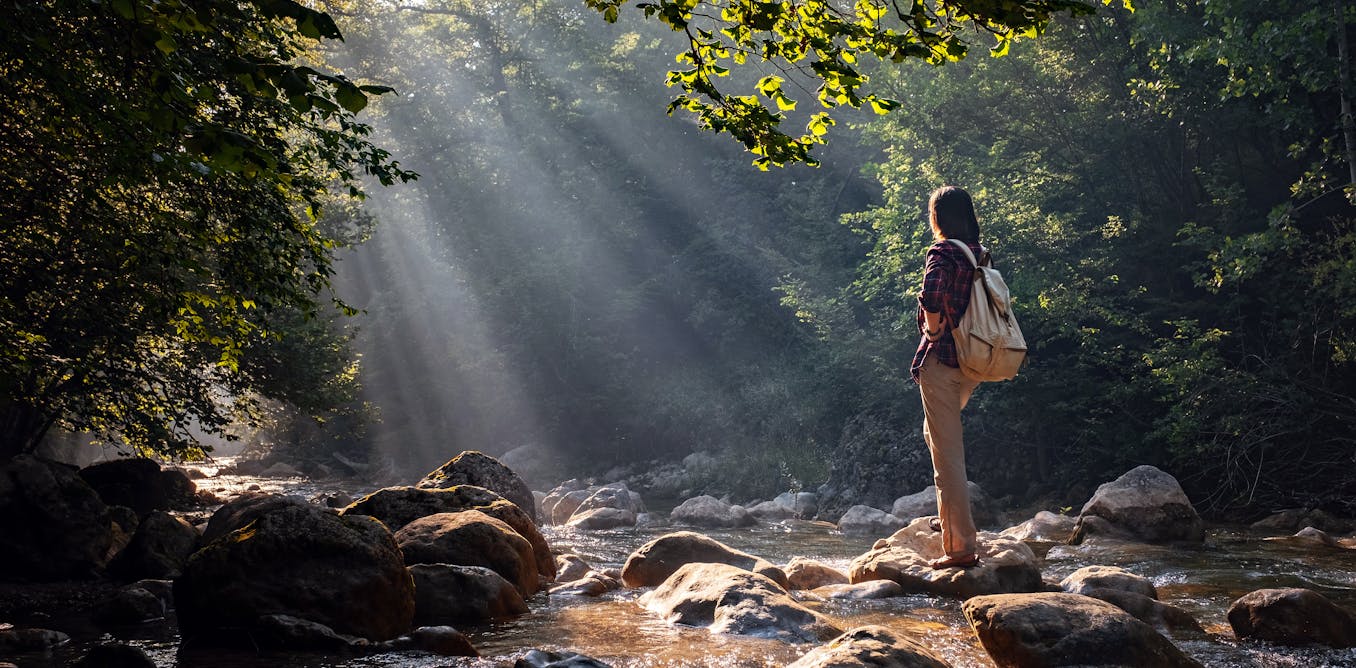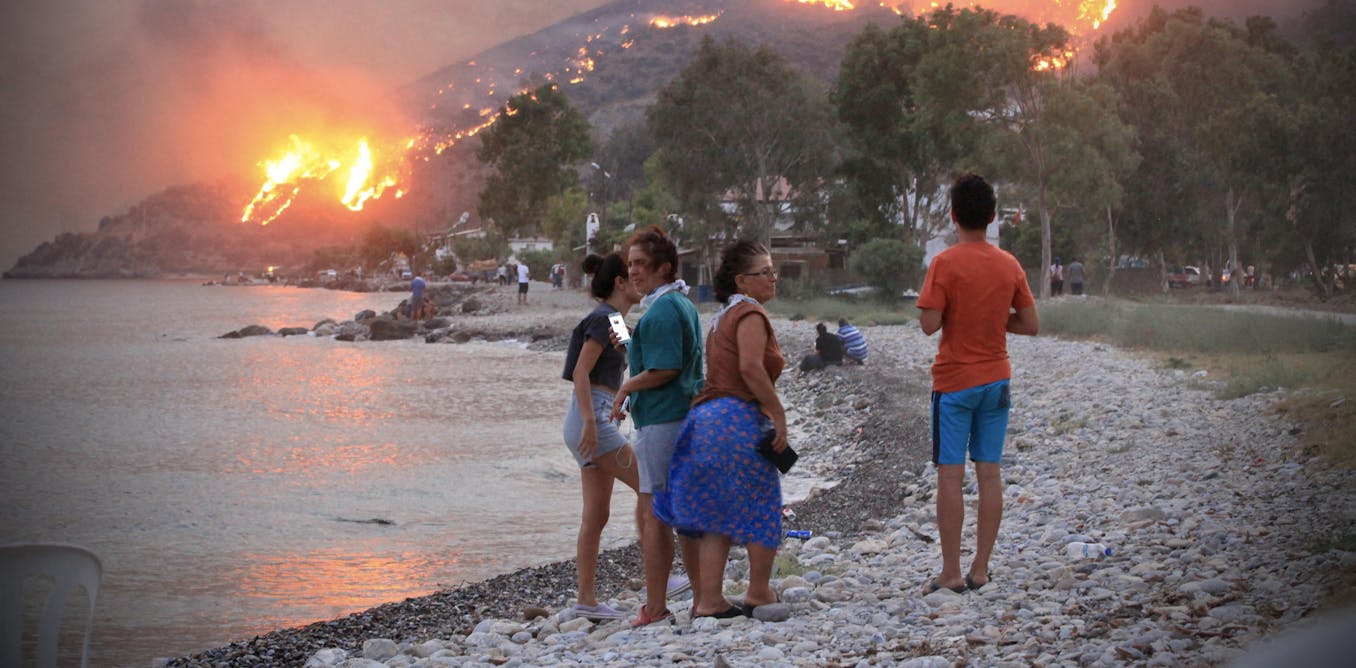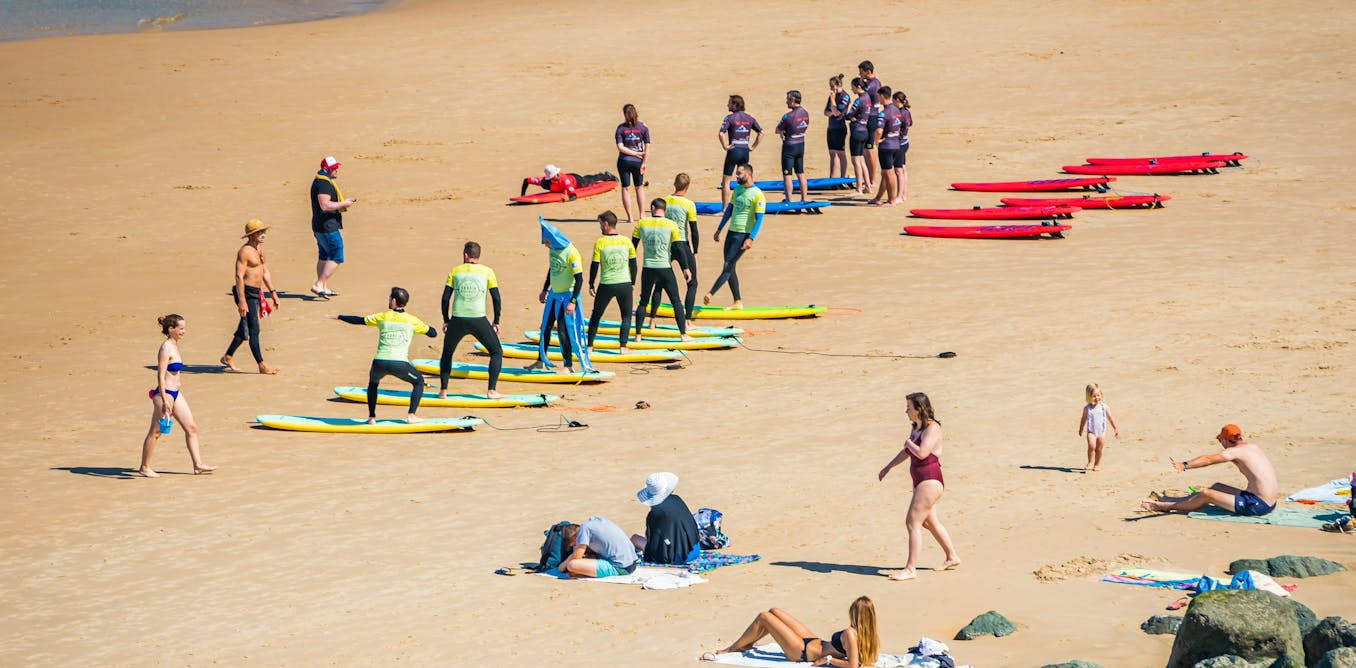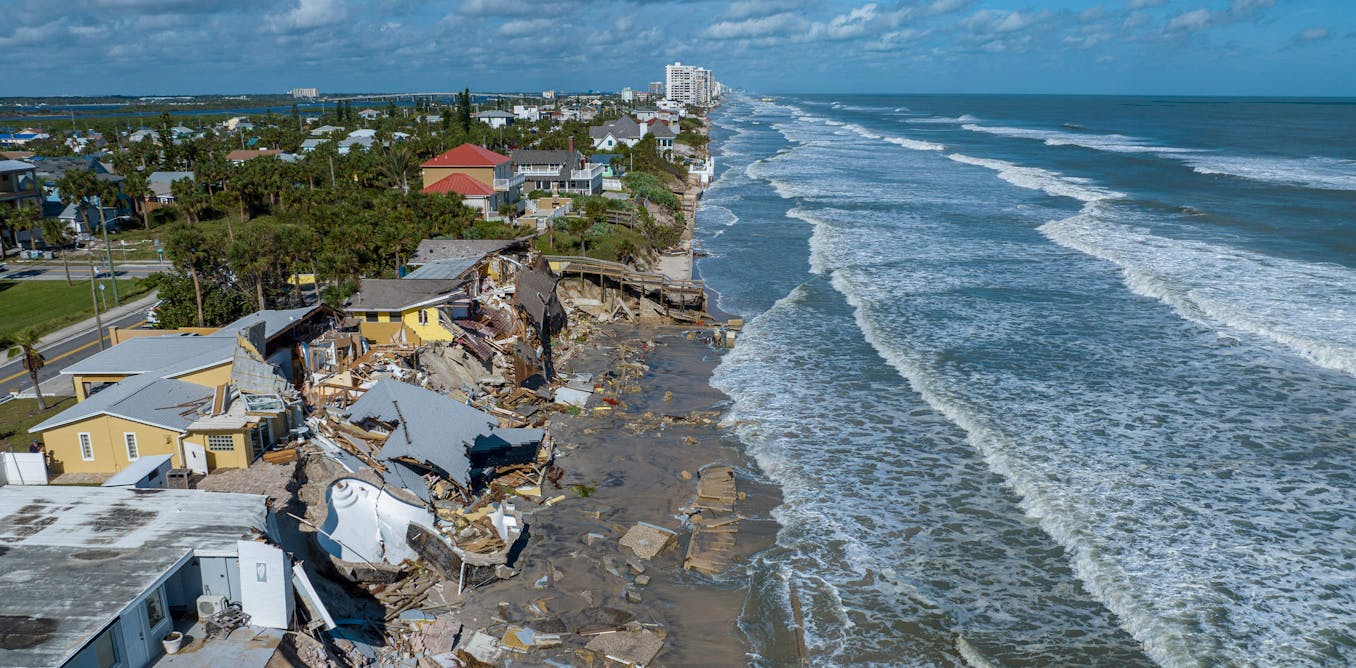The Last Known Slave Ship | 60 Minutes Archive takes viewers on a compelling and emotional journey back in time, focusing on the discovery of the Clotilda, the last known slave ship that brought captured Africans to America in 1860. The sunken ship was found in the bottom of an Alabama River, uncovering a piece of history that has been shrouded in mystery for over a century. Through interviews with direct descendants of the enslaved Africans brought on the Clotilda, the documentary showcases the harrowing and tragic journey of these individuals, as well as the resilience and strength of their descendants who still live near where the ship was discovered.
The film sheds light on the cruel and inhumane conditions in which the captives were forced to endure during the two-month voyage, locked naked in the cramped cargo hold of the ship. It also delves into the remarkable story of Africa Town, a community founded by 30 of the Africans brought on the Clotilda, who worked tirelessly to build a new life and community for themselves after emancipation. Additionally, the documentary explores the ongoing efforts to uncover and preserve the remnants of the ship, in order to honor the memory of those who suffered and to give their descendants a tangible connection to their past. The Last Known Slave Ship | 60 Minutes Archive is a powerful and important piece of storytelling that highlights the resilience and spirit of those who endured the horrors of slavery, while also showcasing the importance of preserving and learning from this dark chapter in history.
Watch the video by 60 Minutes
60 Minutes rewind two years ago a sunken ship was found in the bottom of an Alabama River it turned out to be the long lost wreck of the clotilda the last slave ship known to have brought captured Africans to America in 1860. at least 12 million Africans were
Shipped to the Americas in the more than 350 years of the transatlantic slave trade but as you’ll hear tonight the Journey of the 110 captive men women and children brought to Alabama on the clotilda is one of the best documented slave voyages in history the names of those enslaved Africans in
Their story has been passed down through the generations by their descendants some of whom still live just a few miles from where the ship was found in a community called Africa town for 160 years this muddy stretch of the Mobile River has covered up a crime in
July 1860 the clotildo was towed here under cover of Darkness imprisoned in its cramped cargo hold 110 enslaved Africans I just imagine myself being on this ship just listening to the waves and the waters and just not knowing where you were going joycelyn Davis Lorna Gayle woods and Thomas Griffin are
Direct descendants of this African man oluwale enslaved in Alabama his owner changed his name to Charlie Lewis this image is from around 1900.ly Allen whose African name was capoli seen in this hundred-year-old sketch was the ancestor of Jeremy Ellis and Darren Patterson no clothes eating where they defecated only allowed out of
The cargo hole for one day a week for two months how many people do you do we know now that could have survived something like that without losing their mind there are no photographs of Pat Frazier’s great great grandmother Lottie Dennison but Capriccio Wallace and her mother Cassandra have a surprising
Number of pictures of their ancestor kazula whose owner called him kajo Lewis what does it feel like to be a able to know where you come from to know the person who came here first it’s empowering very like growing up my mom make sure she told me all the stories that her dad
Told her about kojo Cassandra that was important to you very much to pass that knowledge along my dad set us down and he would make us repeat kazulu could till the cudjoe Lewis it has historical uh importance as well as a story that needs to be told
The story of the clotilda began in 1860 when Timothy Mayer a wealthy businessman hired Captain William Foster to illegally smuggle a shipload of captive Africans from the kingdom of dahome in West Africa to Mobile Alabama slavery was still legal in the Southern United States but importing New Slaves
Into America had been outlawed in 1808. in his journal Captain Foster described purchasing the captives using nine thousand dollars in gold and merchandise as this replica shows the enslaved Africans were locked naked in the cargo hold of the clotilda for two sickening months when they arrived in Mobile they
Were handed over to Timothy Mayer and several others Captain Foster claimed he then burned and sank the clutilda but exactly where remained a mystery until 2018 when a local reporter Ben Raines found the clotilda in about 20 feet of water not far from Mobile he’d been searching for seven months following
Clues in Captain Foster’s Journal the exact location hasn’t been made public for fear someone might vandalize the ship but last February the Alabama historical commission gave Maritime archaeologist James Delgado who helped verify the wreck permission to take us there so the clotilda came up this way straight up here
Practically in a straight line after they dropped off the people and then on one side of the bank set her on fire and sanker so he was trying to destroy evidence of a crime yes the bow of the clutilda is not far from the surface of the waters so muddy the
Only way to see it is with this sonar device Sonos good to draw so we’re almost over now yeah okay we’re coming right up on it so that’s the the bow right there that’s it right there yeah oh you can see it like that yeah so you
Can see it totally clearly I mean that’s the ship yes yeah that’s close on Sonar the bow is clearly defined as are both sides of the hull the ship is 86 feet long but the back of it the stern is buried deep in mud those two horizontal
Lines are likely the walls of the cargo hold where the enslaved Africans had been packed tightly together on the voyage from West Africa so the hole where people were held how big was that in terms of where people could actually fit five feet by about 20 feet wait a minute it was
Only five feet high so people could barely stand up in this hole yes diving on the wreck is difficult underwater there’s zero visibility you can’t even see the ship delgado’s team has only felt it with their hands they call it archeology by Braille this is the only
Image our camera could pick up a plank of wood covered with what looks like barnacles Delgado and state archaeologist Stacey hathorne showed us some of the artifacts they retrieved this plank of wood is likely from the hull of the ship and this iron bolt with wood attached shows
Evidence of fire damage you don’t see the grain of the woods it basically makes a briquette so this is evidence clearly of that they tried to burn the ship yes yes the enslaved Africans were taken off the ship before it sank but Delgado says there could still be DNA
From some of them in the wreck you will find human hair you can find nail clipping somebody may have lost it too you could still find human hair in the wreck of the clotilda yes the state of Alabama has set aside a million dollars for further excavation
To determine if the clotilda can ever be raised from the riverbed the ship may be too damaged or the effort too expensive I think what’s extremely important for folks to understand is that that there was a concerted effort to hide these things that were done Mary Elliott oversees the collection of
Slavery artifacts at the smithsonian’s national museum of African-American history and culture in Washington DC it’s important that we found the remnants of this ship because it for African Americans it’s their piece of the True Cross their Touchstone to say we’ve been telling you for years and here’s the proof
Remarkably many of The Descendants still live just a few miles from where the clotilda was discovered this is Africa Town founded around 1868 three years after emancipation by 30 of the Africans brought on the clutilda whistling Davis has organized festivals to honor Africa Town’s Founders one of whom was her great-great-great-grandfather Charlie
Lewis last February she took us to the street he lived on called Lewis quarters so pretty much everyone on this street can can trace their lineage back everyone here is related wow yeah Lewis and some of the others got jobs at a nearby Sawmill owned by Timothy Mayer
The same man responsible for enslaving them I mean they work for like a dollar a day until they saved with their money to buy land cudjoe Lewis also worked at the mayor’s Sawmill this rare film shows him in 1928 by then he was in his 80s and one of the
Clotilda’s last living survivors he helped found this church in Africa town the same church his descendants still attend today oh after emancipation it seemed so unlikely that a group of freed slaves could pull their resources and build a community I mean that’s an extraordinary thing there’s this thing we say about
Making a way out of no way making a way out of nowhere when these folks were forced over here from the continent of Africa they didn’t come with empty heads they came with empty hands so they found a way to make a way and they relied on each other and they were resilient
Africa town is the only surviving community in America founded by Africans and over the decades it prospered there was a business district the first black school in Mobile and by the 1960s 12 000 people lived here they both the city within a city and that’s what we can be
Proud of we had a gas station we had a grocery store post office all that was a booming area a black owned business but today those black owned businesses are gone an interstate highway was built through the middle of Africa town in the early 1990s and the small clusters of
Remaining homes were surrounded by factories and chemical plants fewer than 2 000 people still live here the smithsonian’s Mary Elliott took us to Africa Town Cemetery where some of the clotilda survivors and generations of their descendants are buried no matter where you go in Africa town you can hear factories and Industry and
The highway there is this constant Buzz it’s a buzz you hear all the time day and night and it’s a constant reminder of the breakup of this community the story will continue after this The Descendants we spoke with hoped the discovery of the clotilda relieved the revitalization of Africa town and they’d
Like the descendants of Timothy Mayer the man who enslaved their ancestors to get involved according to tax records mayor’s descendants still own an estimated 14 percent of the land in historic Africa Town their name is on nearby street signs and property markers court filings indicate their real estate and Timber
Businesses are worth an estimated 36 million dollars but so far The Descendants we spoke with say no one from the mayor family has been willing to meet I don’t think it’s something that people want to remember because they have to acknowledge that they benefit from it today that they
Benefited that’s it that they benefited and they don’t want it people don’t want to look back and acknowledge and that’s how part of their wealth was derived and that on the backs of those people what would you want to say to them I mean if if they were willing to sit down and
Have you know have a coffee we would first need to acknowledge what was done in the past yeah and then there’s an accountability piece that your family for for this many years five years on my ancestors and then the third piece would be how do we partner together with in Africa town
What to receive to receive personally right however for a lot of development in that Community we reached out to four members the mayor family all either declined or didn’t respond to our request for an interview one man who did want to meet The Descendants is Mike Foster he’s a 73
Year old Air Force veteran from Montana while researching his genealogy last year Mike Foster discovered he’s the distant cousin of William Foster the captain of the clotilda have you ever heard of the last slave ship no no what did you think when you heard it I wasn’t happy about it
It was uh it was very distressing do you feel some guilt no I didn’t feel any guilt I didn’t do it but I could apologize for and last February before the pandemic that’s exactly what he did 160 years have passed 160 years yes this is a powerful moment
To say powerful moment so I’m here to say I’m sorry thank you in an effort to attract tourism to Africa town the state of Alabama plans to build a Welcome Center here but the descendants we spoke with hope more can be done to restore and rebuild this historic black community
And honor the African men and women who founded it so always thank my God such strong people so capable achieve so much and started with so little we have to do something to make sure that the Legacy of those people in that cargo hole never ever has forgotten because they are the
Reason that we’re even here
About 60 Minutes
“60 Minutes,” the most successful television broadcast in history. Offering hard-hitting investigative reports, interviews, feature segments and profiles of people in the news, the broadcast began in 1968 and is still a hit, over 50 seasons later, regularly making Nielsen’s Top 10.
Video “The last known slave ship | 60 Minutes Archive” was uploaded on 06/19/2023 to Youtube Channel 60 Minutes






































